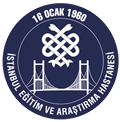ABSTRACT
Objective:
Trauma, degenerative disease, tumor and infections are of major causes for instability in craniovertebral Junction (CVJ). Several surgery methods have been defined to treat pathologies of this region. Various internal fixation systems are being developed for CVJ stabilization. However, there is not a totally agreed upon method for CVJ fixation systems. We present results of a series of 25 CVJ instability cases, all of which were applied fusion via plate-screw or rods instrumentation.
Methods:
We have examined retrospectively all our surgical applications for CVJ pathologies we did in our clinique since 1998, up to 2008. Craniovertebral fusion was major means for all the cases hence rigid posterior screw, or plate, else rods were used. There were a total of 25 patients; of which 13 female, 12 male. Patients had a range of 3 Ð 75 years of age (avg. 44.4). Average follow up duration was 48.2 months. 5 out of 25 patients had trauma (25%), 5 patients had basilar invagination (25%), 8 patients had infectionÐPott Disease (32%), 4 patients had rheumatoid arthritis (16%) and 3 patients had tumor etiology (12%). 3 of the patients had unsuccessful halo application history. Postoperative follow up performed routinely at the 1st week, 1st, 3rd, 6th months and every year.
Results:
Craniovertebral dislocations in all the patients were corrected. There was no mortality due to surgical operations. 2 (8%) of the patients had a slight skin-deep infection. Another 2 (8%) patients who had been applied dens resection were died due to late period infection. Symptoms and neurological findings improved significantly in 90% of the patients, while 10% of the total remained unchanged. Fusion level had a range between occiput and C3-C4. Autograft iliac wing used in all the patients except 6 of them, autograft costa for 3 patients and allograft for the other 3. There was a lack of fusion instance and implant fracture in one of the patients.
Conclusion:
Rigid internal fixation of the complex craniovertebral region has become a thrustworthy technique thanks to ever increased developments and synthesis in occipital bone, cervical pedicule and lateral mass anatomy. In the postoperative period, cervical stiffness and postoperative cervical ache are the disadvantages, while elimination of the need for Halo application is the advantage. Fusion rate is very successfully.



